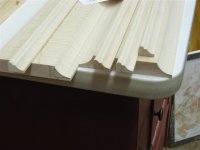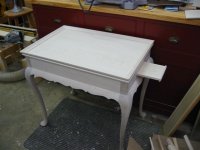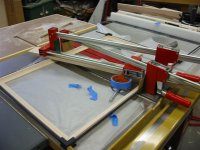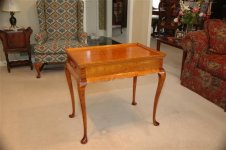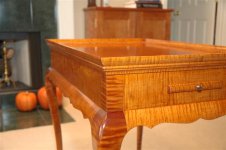I'm in a bit of a pickle. I'm building a try topped tea table. I made the top molding in two pieces similar to what Norm Vandall did on his table in his book. I made my molding with a different profile, but same idea. Anyway, now I'm trying to figure out the best way to attach it. What I have is one piece that attaches to the sides of the table and will be flush with the top. Then, the large cove with the curved outside profile will sit on top of the molding (attached to the first molding, not the top). Hard to explain this in words. What I'm trying to figure out is what is the best way to attach the molding? Glue alone doesn't seem to be a great solutiion because the molding needs a little persuasion to stay where I want it. One article used brads from a gun and claimed that they mimic flat cut nails. I experimented with a small brad nailer (23g) and it makes pretty small holes, but still they are holes. Anyway, thought I'd ask and see what others have done. Thanks for the help.
Tony
This is a picture of the moldings in progress...
Tony
This is a picture of the moldings in progress...

